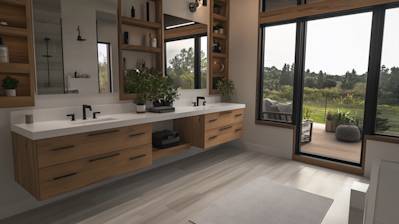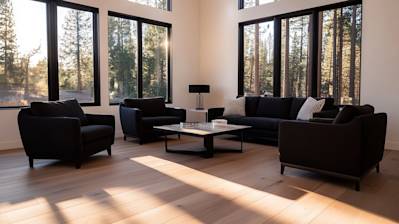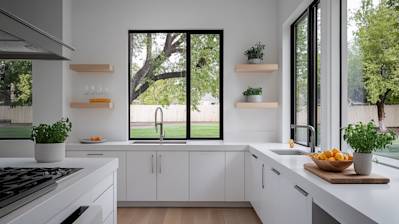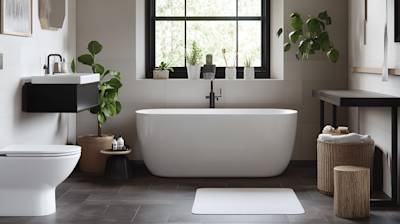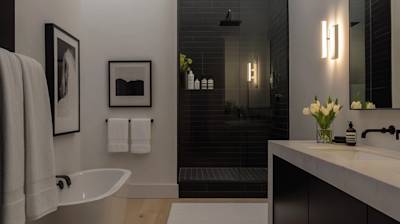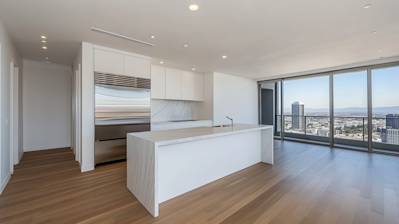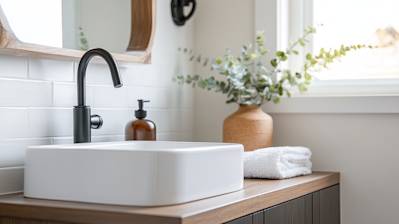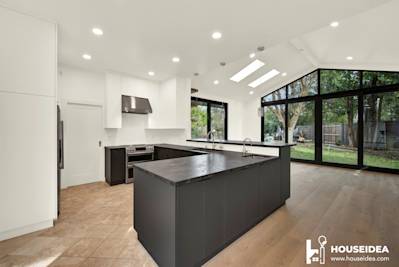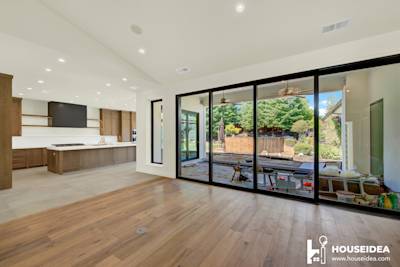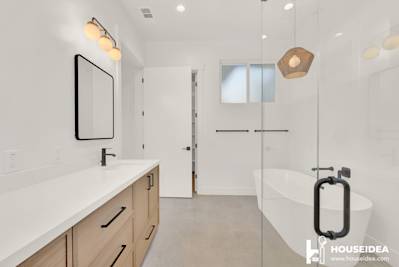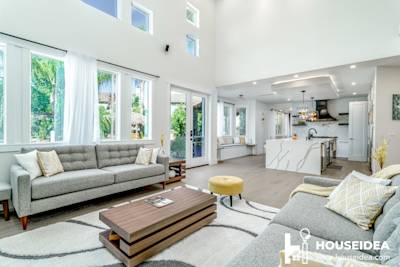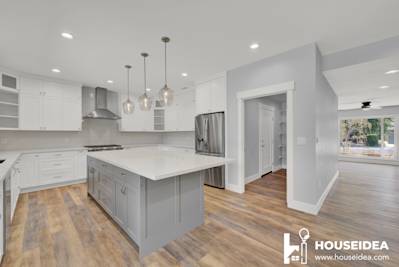The world of interior doors is expansive and dramatic, with countless options, features, materials, and, most importantly, sizes to consider. Each interior door size grants a unique charm and functionality, transforming living spaces into art and architecture's masterpieces. From engineered doors to fancier ones, their sizes form a critical factor in determining the kind of door you need. Sounds intriguing, right? Let's unravel the mystery behind interior door sizes!
Decoding the Standard Door Sizes
Navigating the variety of interior door sizes might seem complicated, but there's science behind the numbers. Firstly, those mysterious figures represent the height and width of the door in inches. The third number, very few acknowledge, is the thickness. Most interior doors usually have a thickness of 1-3/8" to 1-3/4". But let's peek at some standard door sizes:
- Pre-Hung Doors: Pre-assembled doors and frames, typically measure 32" or 36" in width.
- Slab Doors: Without a frame, their measurements vary with standard widths of 24", 28", 30", 32", and 36".
Exploring Customized Interior Door Sizes
While the standard sizes are useful for general applications, a touch of customization ensures your interior doors match your home's unique architectural canvas. The specialized door sizes provide individual spaces their distinct identity, aligning with the home's aesthetic philosophy. Whether it's narrower 18" doors for pantries and wider 48" double doors for large rooms, customized door sizes add an extra dimension of elegance and functionality.
Role of Door Sizes in Different Room Types
The size of the interior door is based on the room's function and the space available. Here's the essential primer on what sizes are used where:
Bedroom and Bathroom Doors
The privacy of bedrooms and bathrooms necessitates proper door installation. Standard door sizes for these rooms are usually around 30"-32" wide and 80" tall. However, some homeowners prefer larger doors for easier access.
Closet and Utility Doors
Closet doors can vary significantly based on the overall layout and design of the room. Standard closet door sizes typically range from 24"-36" wide and 80" tall. For utilities or small closet spaces, the door widths often range from 18"-24".
French Doors
French doors are the stylish cousins in the world of interior doors. They often come in pairs, opening from the middle. Standard french door sizes range from 48", 60", or 72" in width.
Importance of Door Rough Opening Sizes
When considering interior door sizes, the door's rough opening is typically 2" wider and 2-1/2" taller than the door itself. This additional space accommodates the door jamb and some wiggle room for any adjustments during installation. Having the right door rough opening size is as crucial as the door size itself, for the door to fit and function correctly.
Selecting the Right Interior Door Sizes
Choosing the correct door size should be an art that balances design considerations and practical needs.
Measure Accurately
Firstly, accurate measurements form the groundwork for an excellent door installation. Always measure the current door's size from top to bottom and side to side and not the door frame.
Consider Door Swing
The direction in which the door swings is also imperative. For instance, a door that swings into the room should ideally be smaller to avoid hitting any furniture.
Frequently Asked Questions about Interior Door Sizes
Does an interior door size dictate the amount of space a door takes?
Yes, the size of an interior door does determine how much space the door will occupy. The larger the door size, the more room will be required to accommodate it. However, remember to factor in additional space for opening and closing the door, especially if you're dealing with a swinging door.
What other factors should I consider when choosing an interior door size?
Aside from the door's dimensions, consider the door's style, the available space in which the door will be installed, and the door's function. You have to ensure your chosen interior door size aligns with the aesthetic design of the space and is functional in terms of facilitating smooth movement between rooms.
What is the standard interior door size for a wheelchair-friendly door?
The Americans with Disabilities Act (ADA) recommends a minimum interior door size of 32 inches wide for wheelchair-friendly rooms. This width provides enough space for individuals in wheelchairs to comfortably navigate through without struggling.
Can I customize the size of my interior door?
Yes, while most people opt for standard door sizes, it is completely possible to have your interior door custom-sized. This generally happens when the doorways are not compatible with the standard sizes or if you desire a specific aesthetic look. Note that custom-sized interior doors may call for higher costs due to the additional labor and specificity attached to them.
What size of interior door should I choose for closets and small rooms?
It depends on the space available and the purpose of the room. For small closets, a door width of 24 inches is usually adequate. If the closet is larger or used for storing bigger items, you may require a door width of 30 or even 32 inches. However, remember to measure accurately before making any decisions.
What are the different interior door size standards available?
While interior door sizes come in specific standard sizes of 24, 28, 30, 32, and 36 inches, you'll also find non-standard sizes available on the market. These vary depending on the manufacturer and are typically custom-made to fit unique door openings.
Why is it essential to measure my doorway before selecting the size of the interior door?
Measuring your doorway dimension is crucial in ensuring a proper fit for your interior door. Having the correct measurements means the door will fit well, enhance security, soundproofing, and generally function as intended. All these factors contribute significantly to the practicality and overall visual appeal of your home's interior.
Are interior and exterior doors similar in size?
While some sizes may overlap, exterior doors usually tend to be wider and taller than interior doors. Standard exterior doors often measure 36 inches wide and 80 inches high, while interior doors generally have widths ranging between 24 and 36 inches and a height of about 80 inches.
How does the size of the door jamb affect my choice of interior door size?
The door jamb size is crucial as it impacts whether your chosen interior door will easily fit in the given space. Hence, if the door jamb size is not compatible with your selected interior door size, you may encounter problems during the installation process. Measure the jamb's thickness precisely to calculate the fitting room for your door appropriately.
Is it cheaper to choose a standard interior door size?
In general, standard size interior doors tend to be cheaper than custom-sized doors. They are mass-produced, hence considered more cost-effective as manufacturers can control the cost per unit better. Custom doors, on the other hand, require extra labor and specific materials, making them slightly pricier.
Pros of Standard Interior Door Sizes
Versatility
Flexibility in Design
One of the pros of standard interior door sizes is the flexibility they offer in interior design. With variety comes choice, and standard interior door sizes offer this. Small doors, for instance, save space and work perfectly for smaller rooms or closets. On the other hand, larger doors create a sense of openness, allowing room for fixtures such as grand chandeliers.
Easy Replacement
For homeowners, it is satisfying to know that the replacement of an interior door is not complicated. Standard-sized doors are readily available, making it easy to find a fitting replacement when needed. This removes the hassle of customizing a door to fit the opening.
Cost-Effective
Affordability
Standard interior door sizes decrease manufacturing, as well as purchasing costs, since the production process is streamlined and mass quantities can be produced faster. The standardization also leads to a decrease in prices for consumers due to economies of scale.
Reduces Wastage
With standard sizes, there's generally less material wastage, as manufacturers can streamline their production process, cutting multiple pieces from a single stock material with little to no waste.
Cons of Standard Interior Door Sizes
Limited Customization
Lack of Uniqueness
While standard doors offer cost savings and versatility, they lack uniqueness. For those looking for a distinct look that tells a story or conveys personality, standard doors might not hit the mark. They often have basic designs and styles that may not stand out in an exceptional or creative interior design plan.
Restricted to Size
Families with unique size requirements, like wheelchair users or people shifting large furniture often, may find standard door sizes limiting. Not all doorways in a home’s layout might accommodate the standard sizes, making it hard to install some doors without a significant modification.
Quality Concerns
Compromised Integrity
While mass production reduces costs, the quality of standard interior doors may not be as high when compared to custom doors. They are usually made of lighter, less durable materials that may not stand the test of time.
Difficulty in finding historic matches
Contrasting styles
For homes with historic designs or interiors, finding matching standard doors can be a challenge. Most standard interior doors have contemporary designs that may contrast with a home's traditional or period-appropriate aesthetics.
To ensure a unified look in such homes, bespoke door sizes might be necessary for an authentic match.
Conclusion
Deciding between standard or custom interior door sizes comes down to assessing individual needs and priorities. If cost-effectiveness, ease of replacement, and a flexible design are high on the list, standard sizes are ideal. However, for those seeking uniqueness, quality, and matching with specific or historic designs, custom sizes may offer more satisfaction.
Summary
So, you've been wondering about interior door sizes, huh? Well, there is a whole lot more variety to consider than you might think! From compact and slim doors perfect for tiny closets or pantries, to the wider doors designed for wheelchair accessibility. It goes beyond just not hitting your elbow when you walk in a room. Proper door sizes can completely change the feel of a space.
If you're taking on a renovation project, don’t underestimate the importance of interior door sizes. They provide functionality and could potentially save you from any potential hazards. Larger doors can feel more inviting and open, while smaller ones can give a cozier or private feel. Whatever you decide, don’t forget to factor in the surrounding space, especially if you are considering swinging doors.
People often think the measure of a home is in its grand exterior or stunning front entrance, but very often it’s the interior details that truly makes a home feel personal and special. Paying close attention to interior door sizes will not only ensure a comfortable living but also add to the overall aesthetics of your home. Going that extra mile can make all the difference! So now when you think about doors, you know size really does matter!
About HouseIdea
HouseIdea of Sacramento, CA is your go-to destination for all things home design. Let's face it, we know coming up with innovative ideas for your home isn't always a walk in the park. That's where we come in. As a local company from the beautiful city of Sacramento, we embody the spirit of our community with our craft, offering top-tier home design ideas for interior, exterior, and everything in between. Passionate and committed, our team at HouseIdea can't wait to help you transform your house into the home of your dreams! Whether it's choosing the right color palette, finding the perfect furnishings, or designing space-saving solutions, we've got you covered. Dive into a world where creativity meets practicality and discover your HouseIdea experience today. So, what's your house idea?
Tags: standard sizes, measurement, home improvement,



